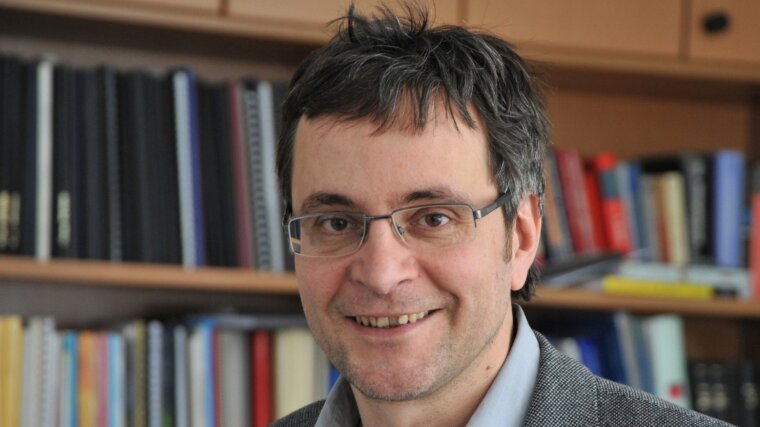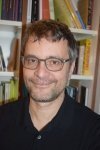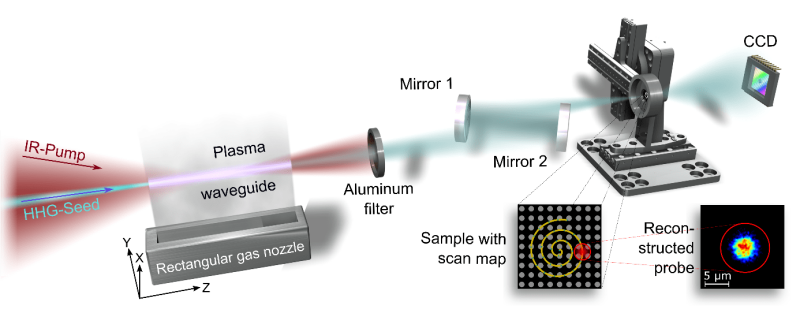
Christian SPIELMANN
Image: PrivateProf. Dr. Christian SPIELMANN
Email: christian.spielmann@uni-jena.de
Phone: +49 3641-9-47230
Prof. Spielmann is member of the board of directors of the Abbe Center of Photonics and of the executive board of the Abbe School of Photonics. Further, he is the spokesperson of the Graduate School for Advanced Photon Science at the Helmholtz Institute Jena. Besides his duties at the University, he serves as elected deputy speaker of the scientific advisory board of the IPHT, member of the board of the HED@FAIR plasma physics collaboration, and was co-founder of Femtolasers GmbH, one of the premiere manufacturers of ultra-fast laser systems. Since 2019, Prof. Spielmann serves as the elected dean of the Faculty for Physics and Astronomy.
Research Areas
Prof. Spielmann's research of is focused on the generation and application of ultra-short pulses from the infrared to the x-ray regions, including:
- Generation and amplification of ultrafast optical pulses and application in medicine
- Nonlinear optics in structured materials
- Generation of spatially and temporally coherent XUV radiation
- Laser plasma physics for realizing x-ray sources and Raman amplifiers
- Application of XUV radiation for functional imaging of nanoscale materials
Teaching Fields
Prof. Spielmann's lectures center on:
- Atomic and molecular physics
- Fundamentals of modern photonics
- XUV and x-ray optics
- Modern methods of spectroscopy
Research Methods
The equipment of Prof. Spielmann’s laboratories allows for studying the structural dynamics of atomic and solid systems as well as imaging nanostructures:
- Novel approaches for quantum imaging with short velength sources
- Spatial and temporal shaping of ultrashort pulses
- Tunable mid-IR femtosecond sources for time-resolved spectroscopy of solids
- Nonlinear optics for coherent XUV generation
- Laser-based XUV and x-ray spectroscopy with high temporal resolution
- Setup for high resolution XUV imaging in reflection and transmission geometry
Nonlinear ionization dynamics in hot dense plasma observed in a laser-plasma amplifier.
Image: Published by the Spielmann research group.Recent Research Results
Spectral broadening and compression of laser pulses is of central importance for many applications. Here, the laser-matter interaction is confined to gas-filled novel anti-resonant hollow-core fibers (ARHF), which enable efficient guiding of intense light inside the fiber. Our experiments with Kr-filled ARHF have shown more than an octave spectral broadening [1]. Major advantages of ARHF are low loss, large-mode field diameter with effective single mode guidance from near IR to deep UV. This project tackles fundamental physical questions concerning the interaction of intense ultrashort mid-IR pulses with matter and provide a tunable ultrashort (down to a single optical cycle) source of near- to mid-IR radiation, which has applications in diverse areas of imaging. In another collaboration, we investigated experimentally interaction of sub-relativistic and relativistic femtosecond laser pulses with nanostructured solid dielectric targets. Interaction of ultra-intense laser radiation with nanostructured targets is a hot topic in modern strong field physics [2], like the generation of high harmonics in solids up to ultra-hot and ultra-dense plasmas for applications in particle acceleration and hard X-ray generation. Experiments were carried out with different types wide-band gap, nanostructured semiconductors. Experiments at relativistic (about 1018 W/cm2) intensities were conducted at Jena’s JETi-40 multiTW laser system. Both the characteristic X-ray emission from transitions in high charge state ions generated in the targets [3] and the emitted particles were measured and simulated. Besides large-scale facilities such as synchrotrons and free electron lasers, only few approaches for brilliant XUV sources exist. The process of high harmonic generation (HHG) provides an elegant alternative for generating photons within the XUV and soft x-ray spectral region. Due to its outstanding properties the generated radiation is ideal for applications in spectroscopy, imaging and time-resolved studies. Beside further increasing the conversion efficiency, we will address the bandwidth of the harmonics, which is crucial for high resolution imaging. Our bright HHG sources emit narrow bandwidth harmonics with are essential for all high-resolution lens-less imaging techniques such as digital in-line-holography, coherent diffraction imaging and ptychography. In joint experiments with Prof. U. Kleineberg (MPI Munich), we demonstrated our capabilities to image close to highest possible resolution in a reasonable exposure time. In another cooperation with industry and the university hospital, we demonstrated a novel approach for rapidly classifying cell types: we measure the pattern of coherently diffracted extreme ultraviolet radiation and demonstrated that it is possible to distinguish different single breast cancer cell types.
More recently, we started to explore other XUV sources such as laser-driven plasma sources and x-ray lasers for high resolution imaging [4]. They offer a higher flux and/or shorter wavelengths which is of great interest for approachig singleshot, table-top imaging in the water window. In parallel we work on realizing a proof of principle experiment for quantum ghost imaging [5] in the XUV. This ansatz holds promise for element specific sub-µm resolution imaging of biological samples without substantial radiation damage.
[1] Sollapur et al., Light: Sci. & Appl. 6, e17124 (2017).
[2] Hollinger et al., Nano Lett. 19, 3563 (2019).
[3] Samsonova et al., Phys. Rev. X 9, 021029 (2019).
[4] Tuitje et al., Light: Sci. & Appl. 9, 187 (2020).
[5] Sun et al., Opt. Express 27, 33652 (2019).

